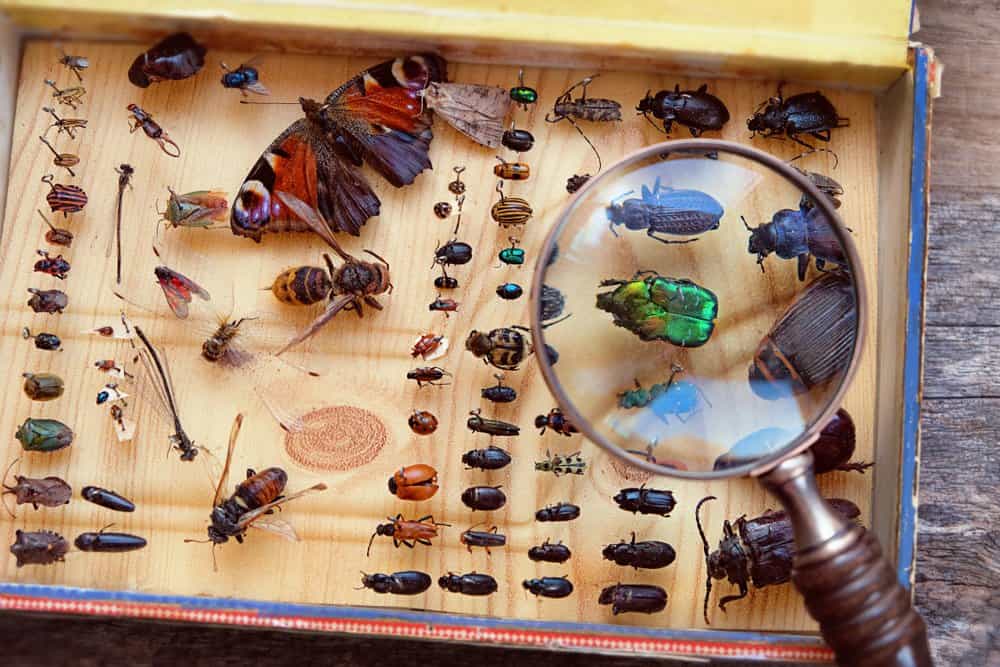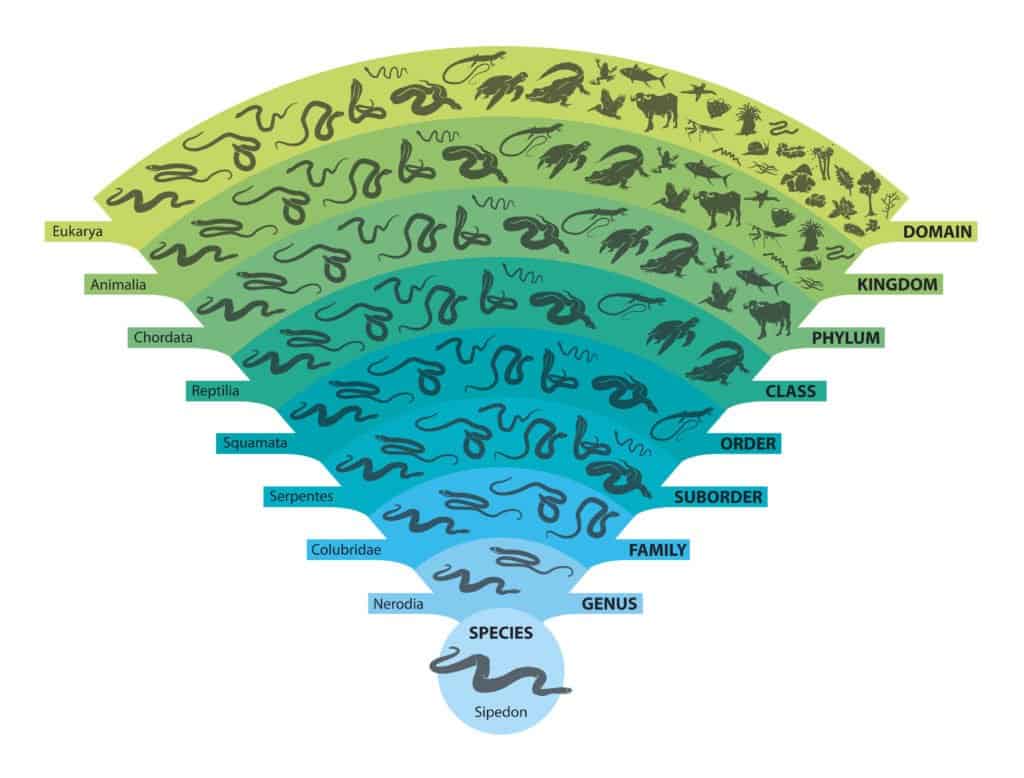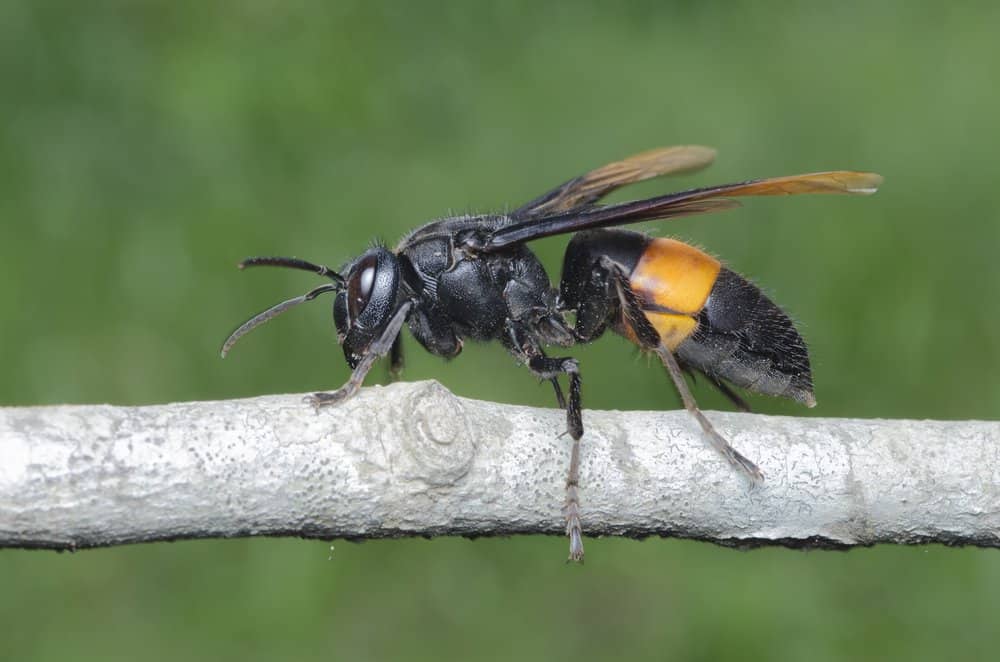What Percentage Of The World's Animal Tissue Is Composed Of Ants
Cardinal Points:
- Insects are considered animals because they reproduce sexually, breath oxygen, eat organic fabric, and are able to move.
- There are about one meg described species of insects, which brand upwards almost 70% of all brute species. Notwithstanding, scientists believe in that location could be equally much as 5 meg existing species of insects!
- In full general, insects have six legs, 3 torso segments, and 2 antennas. The millipede is not considered an insect considering information technology has up to 750 legs and sometimes hundreds of body segments. It belongs in its own course named Diplopoda which includes more than than 12,000 described species.
To date, scientists have identified nigh 1,744,204 (or 1.74 1000000) species.
That's an impressive number, just a mere drop in the saucepan compared to the number of species waiting to be discovered. Contempo estimates identify the number of species in the natural earth anywhere between 8.seven million and over a trillion!
Just the estimate includes plants, unmarried-celled organisms, and fifty-fifty algae. Because, a more appropriate question might be: How many animals are on Earth? And more importantly, merely what is an animal? Are insects animals? Are bacteria? Let'southward dig in a little deeper.

ju_see/Shutterstock.com
Are Insects Animals?
The reply to the showtime question — are insects are animals — is a resounding yes. Insects are animals. Now permit'southward dig into why.
Looking at our handy Animal Classification Guide, we meet the highest level of taxonomy is 'Domain.'

EreborMountain/Shutterstock.com
Archaea, Leaner, and Eurkarya are the three taxonomic domains. The first two include mostly single-celled organisms, but only Eukarya features organisms with cellular nuclei. Does that mean everything in Eukarya is an beast? No. To reach that bespeak we need to movement downwards a rung to 'Kingdoms.'
After all, trees are multiple cell organisms with nuclei, but a tree is obviously non an animal! That'south why at a 'Kingdom' level there is a classification known as Animalia, or animals. Species grouped in animals share a number of common traits:
- They reproduce sexually;
- Breath oxygen;
- Swallow organic material; and
- Are able to move.
With a low number of exceptions, all animals meet these basic criteria. So the next fourth dimension someone asks yous, "are insects animals?" Yous tin answer "yes," considering they reproduce sexually, breath oxygen, swallow organic material, and are able to motion.
What Percent of the World's Animals Are Insects?
Now that we've established that insects are animals, let'southward dig into just what percentage of the animal kingdom is insects.
The short reply: A lot. Today there are well-nigh i million described species of insects. That'southward almost 70% of all animate being species. In full, invertebrates (which includes arachnids, crustaceans, and other species) are 96% of all identified animal species.
When y'all compare the number of insects (under the 'Class' Insecta), you see the staggering biodiversity of insects.

Protasov AN/Shutterstock.com
Number of Species (Chapman, 2009)
- Insects: ~1,000,000
- Mammals: five,487
- Birds: 9,990
- Reptiles: 8,734
- Fish: 31,153
- Amphibians: 6,515
Most chiefly, the per centum of insects compared to other animals should continue to grow in the decades to come up.
For example, researchers believe there may exist virtually a dozen undiscovered/undescribed mammal species beyond the world. Put some other way, 99.9% of mammal species take been discovered.
(Perchance Bigfoot is out at that place… merely don't hold your breath!)
A chart below compares just how massive the number of undiscovered insects may be!
| Group | Described Species | How Many Exist (Est) |
|---|---|---|
| Mammals | five,487 | ~5,500 |
| Reptiles | 8,734 | ~10,000 |
| Fish | 31,153 | ~xl,000 |
| Birds | 9,990 | >10,000 |
| Amphibians | half-dozen,515 | ~15,000 |
| Insects | ~1,000,000 | ~5,000,000 |
Today, nearly 70% of the world'south animals are insects. But in the future, insects and invertebrates could constitute more than 99% of all brute species!
You lot may wonder–how do scientists come up with such a large estimate of undiscovered insects? For one, advancements accept provided meliorate statistical tools also as new data. Information technology's estimated that there are 1.5 one thousand thousand species of beetles, v.five million of insects, and 7 1000000 species of terrestrial arthropods. But the previous xxx million species approximate based on comparisons of insects to plants has been accounted a low estimate. They now believe 80% of existing insects remain undiscovered.
What Is an Insect?
Nosotros've identified that:
- Insects are animals, and
- In that location are significantly more than unknown insect species than at that place are mammals, reptiles, fish, birds, and amphibian species combined (and it's not even close!)
And so now let's dive into what, exactly, constitutes an insect by looking at some incredible invertebrates.
Why the Millipede is Non an Insect
While nosotros might call anything that crawls along the footing an 'insect,' in reality many small invertebrates aren't.
Insects generally take six legs, three trunk segments, and two antennas. Compare this to the millipede which has up to 750 legs (fun fact: no millipede actually has a thousand legs!) and sometimes hundreds of torso segments!
So while a millipede might be modest, crawl on the ground, and have an exoskeleton, it's really not an insect but its own 'Class' named Diplopoda that includes more than 12,000 described species.
And here's something listen-bravado: millipedes might be small today, just that's wasn't e'er the example. Three hundred 1000000 years agone, some millipedes grew larger than humans! Scientists theorize that their massive size was possible thank you to incredible levels of oxygen in the World's temper at the time.

Vikorn Phartchayapruti/Shutterstock.com
The Asian Behemothic Hornet: An Insect
Is the Asian giant hornet an insect? The respond is "yeah." While the species flies, it has three torso segments, six legs, two antennas, and 3 body segments.
In the U.s.a. alone at that place are more than 19,600 species of flies, 11,500 butterflies and moths, and 17,500 insects from the 'Society' that contains bees and wasps. That'southward a lot of flying insects!
You've surely seen news stories about "murder hornets." These giant wasps have been spotted across the U.s. in 2020 and raised pregnant media attending.
What's the big deal? For starters, Asian giant hornets are voracious honeybee predators. A minor group can completely wipe out a colony of 30,000-plus honeybees in just a couple of hours!
The Asian giant hornet isn't really a murder hornet. Well-nigh 40 people die a year course their stings in Asia, and virtually these deaths can be traced back to allergic reactions. However, their stringers are quite painful and all-time avoided!

Ruzy Hartini/Shutterstock.com
Bugs vs. Insects
Finally, you might be request yourself "what'south the departure between an insect and a bug?" Similar insects, bugs are definitely animals, but the question of how bugs and insects differ might exist on your listen.
The discussion "bug" is often informal. Many people will simply utilise the discussion "bug" to refer to any crawly animal with legs. Under this definition, even animals that aren't insects (like the case of millipedes above) would qualify every bit bugs
A more than formalized definition of a problems is an insect whose mouthparts slice and suck. The lodge of insects that fall under this definition of the word "bugs" is Hemiptera. Examples of bugs nether this more formalized definition include everything from bed bugs, to cicadas, to aphids, which are small sap-sucking insects.
How Many Insects Are in the Earth Today?
With insects on every non-Arctic landmass beyond the globe, yous might be wondering: "How many insects are in the world?"
Information technology's nearly incommunicable to count insects, but scientists gauge their populations and most believe that roughly 100 trillion ants roam the earth! Put some other way, their "biomass" may be as much equally all humans combined — even with our weight differentials factored in!
The full number of every type of insect was estimated by the Smithsonian at 10 quintillion. If we write that out, the number of insects in the world today is x,000,000,000,000,000,000 insects on Globe!
How are there and so many insects in the earth today? Well, only a unmarried "super ant colony" stretches three,700 miles along the Mediterranean coast, and ants aren't even a fraction of total insects.

Elizaveta Galitckaia/Shutterstock.com
And there you have it, the low down on insects! Side by side upwardly: New Monkey Species Institute in Myanmar!
Up Side by side…
- Is the Spider an Insect? Let'southward settle this question once and for all in this deep dive into the characteristics of insects vs spiders.
- Find 15 Astonishing Animals That Eat Insects Some animals feed on insects for their survival. Hither's a list of 15 that do only that.
- Killer Bee vs Honey Bee: What are the Differences? What differentiates the greatly feared killer bee from the mutual honey bee? Read this fascinating article to find out.
More than from A-Z Animals
Source: https://a-z-animals.com/blog/are-insects-animals/
Posted by: coleywhely1977.blogspot.com

0 Response to "What Percentage Of The World's Animal Tissue Is Composed Of Ants"
Post a Comment